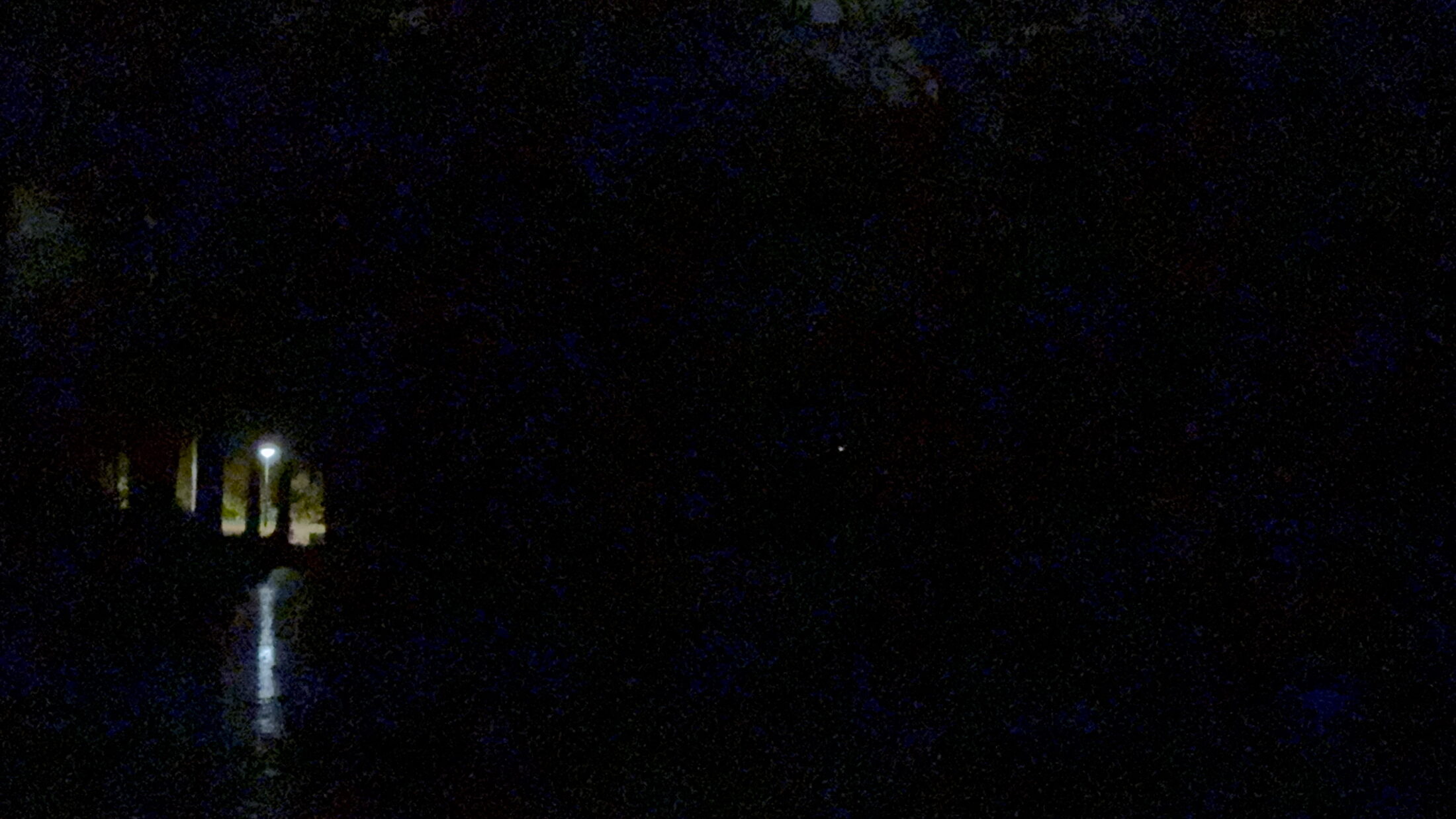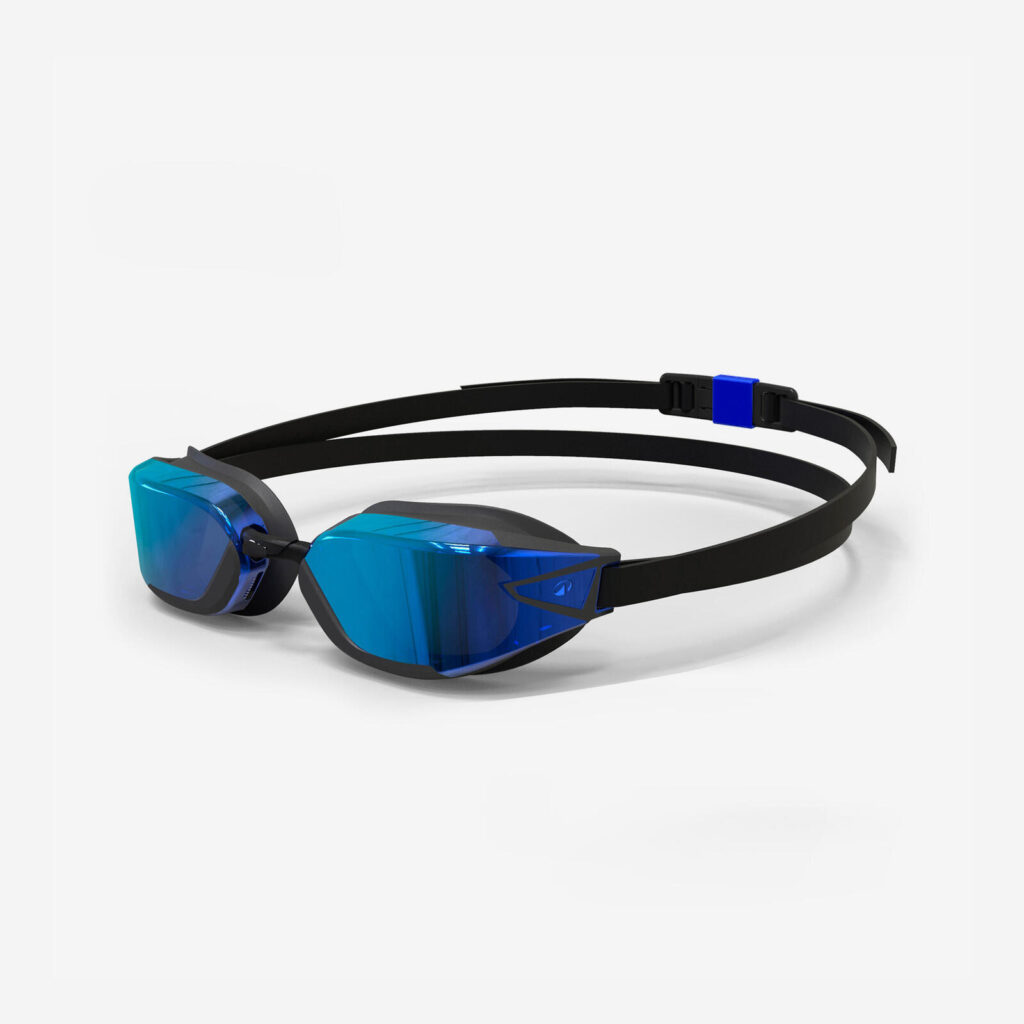IN
NL

caption: placeholder placeholder placeholder placeholder placeholder placeholder
我和幻视的关系是同一的,我的幻视总是存在在我每一天每一刻的世界中,只是在特定的漆黑的夜晚我可以更清晰地看到它。在漆黑的户外,空旷的空间创造了一个幻视的容身之所,而水成为了链接我和我的幻视的关系。这个关系是特殊的,是 site-specific的,因为我的幻视的形状是我所处或想象的空间,它的方位是空间里水的方向:黑暗塑造了看见幻视的环境,水塑造了接近幻视的语境。
所以关于幻视,水是接近它的桥梁。因为水在空间上链接了我的物理存在,以及那个幻视出现的空间——幻视需要被 situated 在一个特定的位置,才能被定义,就像水在可以溶化它的黑暗中仍然占据一个特定的位置一样。正是因为水占据一个特殊的位置,所以人会认为水是区别于无边无际的黑暗的,而正是在水被黑暗模糊的尽头我看见了幻视,我才能将水和幻视关联起来。而当发现无法锁定它们的范围,它们拥挤地充满了周围的黑暗时,这是一个存在的外溢,而非直接将其包含在存在的最初定义之中。在一个视角下,空间是有顺序的,就像电影镜头,我先看到了黑色的水,才看到了水与黑暗交融的尽头,才在那个尽头看到了幻视,才在周围的所有黑暗中看到了无法分辨的,水与幻视与树林混合的模糊物质。
但这个视角只是一种叙述,如果更换观察的顺序我就会看到不一样的水和幻视。从周围的黑暗中我首先会看到幻视,这是最膨胀的充盈的物质。在周围仅有的亮光中我看到了水的存在,这让我意识到周围的黑暗并不仅仅被幻视这一种模糊的物质占有,而也被黑水共享——我意识到眼前的黑水是周围黑暗的汇聚,就像模糊的空气终于生长出了一个可触碰的触须。这个意义上水不再是链接(connection),而变成了浓缩(concenteration).
我想要从人眼和solor spectrum 的逻辑去讨论这个问题。这个问题是递进式的,逐渐接近一种新的 worlding 的视角。当我们刚刚进入黑暗的时候,眼前一片漆黑,因为视锥细胞失效而视杆细胞尚未生成:Black Hole 时刻,我们知道眼前有无却什么都看不见,这是一种失明,这是一种 void/warning for us to be aware of another part of this world. 但是,当我们看得时间久了,视杆细胞生成,细节逐渐显现,这是 Black Cave 时刻,是一种invitation to the darkness.
视杆细胞是由于远古的深海生存环境而进化出来的,这是很有意思的一个载体,因为我也在讨论深海。可以想象在黑暗的水的边缘是否激活了我们远古的深海基因?我们的眼睛里含有与遥远的深海最直接的最亲切的最熟悉的联系。rod cells 的意义在于,它告诉我们我们曾经生活在没有阳光导航的环境,我们拥有认识黑暗的能力——由于这一细胞的存在,或许现在依然拥有。rod cells 是建立新的 worlding 的物质基础。深海可以成为一种 metaphor for that new world,因为我无法 access,我无法产生直接的 embodied 的情感化体验。
Englsh Translation
I perceive my relationship with the vision as one of sameness. My vision is always present in every day and every moment of my world; only in certain pitch-black nights can I see it more clearly. In the darkness outdoors, the emptiness of space creates a shelter for the vision, and water becomes the medium that links me to it. This relationship is special—it is site-specific—because the shape of the vision is shaped by the space I inhabit or imagine, and its orientation follows the direction of water in that space. Darkness shapes the environment in which the vision can be seen; water shapes the context in which the vision can be approached.
Thus, in relation to the vision, water becomes the bridge toward it. Water spatially connects my physical presence with the space where the vision emerges—the vision needs to be situated at a specific location in order to be defined, just as water occupies a specific position even as it is dissolved into darkness. It is precisely because water occupies a particular position that one distinguishes it from boundless darkness; and it is at the blurred end of the water, where it dissolves into darkness, that I see the vision. Only then can I associate water and vision. But when I find that I cannot determine their boundaries, when they collectively fill the surrounding darkness, this becomes an overflowing of existence, rather than something that can be contained in the initial definition of existence. From one perspective, space appears sequential—like a film shot: first I see the black water, then the edge where water and darkness blend, then the vision at that edge, and then the indiscernible mixture of water, vision, and trees in the surrounding darkness.
But this perspective is only one narrative. If the order of observation changes, I encounter a different water and a different vision. If the first thing I perceive from the surrounding darkness is the vision, then it becomes the most expanded and saturated substance. In the faint nearby light I then see the presence of water, which makes me realize that the surrounding darkness is not occupied solely by the vision’s blurred substance but is shared by the black water as well—here I recognize that the water before me is a gathering of the surrounding darkness, like a tendril grown from hazy air and finally made touchable. In this sense, water is no longer a connection but a concentration.
I want to approach this question through the logic of human vision and the solar spectrum. The question is gradual, progressive—one that approaches a new mode of worlding. When we first enter darkness, everything appears pitch black, because the cone cells fail while the rod cells have not yet taken over: this is the Black Hole moment—we know something is present before us, yet we cannot see it. This blindness is a void, a warning for us to become aware of another part of the world. But as we remain in the dark, rod cells activate, and details slowly appear—this is the Black Cave moment, an invitation to the darkness.
Rod cells evolved from the ancient deep-sea environment, which is very interesting because I am also speaking about the deep sea. One may imagine that at the edge of dark water, our ancient deep-sea genes are being activated. Our eyes contain the most direct, intimate, and familiar link to that remote deep sea. The significance of rod cells is that they tell us we once lived in an environment without the navigation of sunlight—we possessed the ability to know darkness, and perhaps we still do. Rod cells form the material foundation for building a new worlding. The deep sea can become a metaphor for that new world because I cannot access it; I cannot generate a direct, embodied, emotional experience of it.


placeholder placeholder placeholder placeholder placeholder placeholder placeholder placeholder placeholder placeholder placeholder placeholder
Subheading: placeholder placeholder placeholder
content: placeholder placeholder placeholder placeholder placeholder placeholder placeholder placeholder placeholder placeholder placeholder placeholder placeholder placeholder placeholder placeholder placeholder placeholder placeholder placeholder placeholder placeholder placeholder placeholder placeholder placeholder placeholder placeholder placeholder placeholder placeholder placeholder